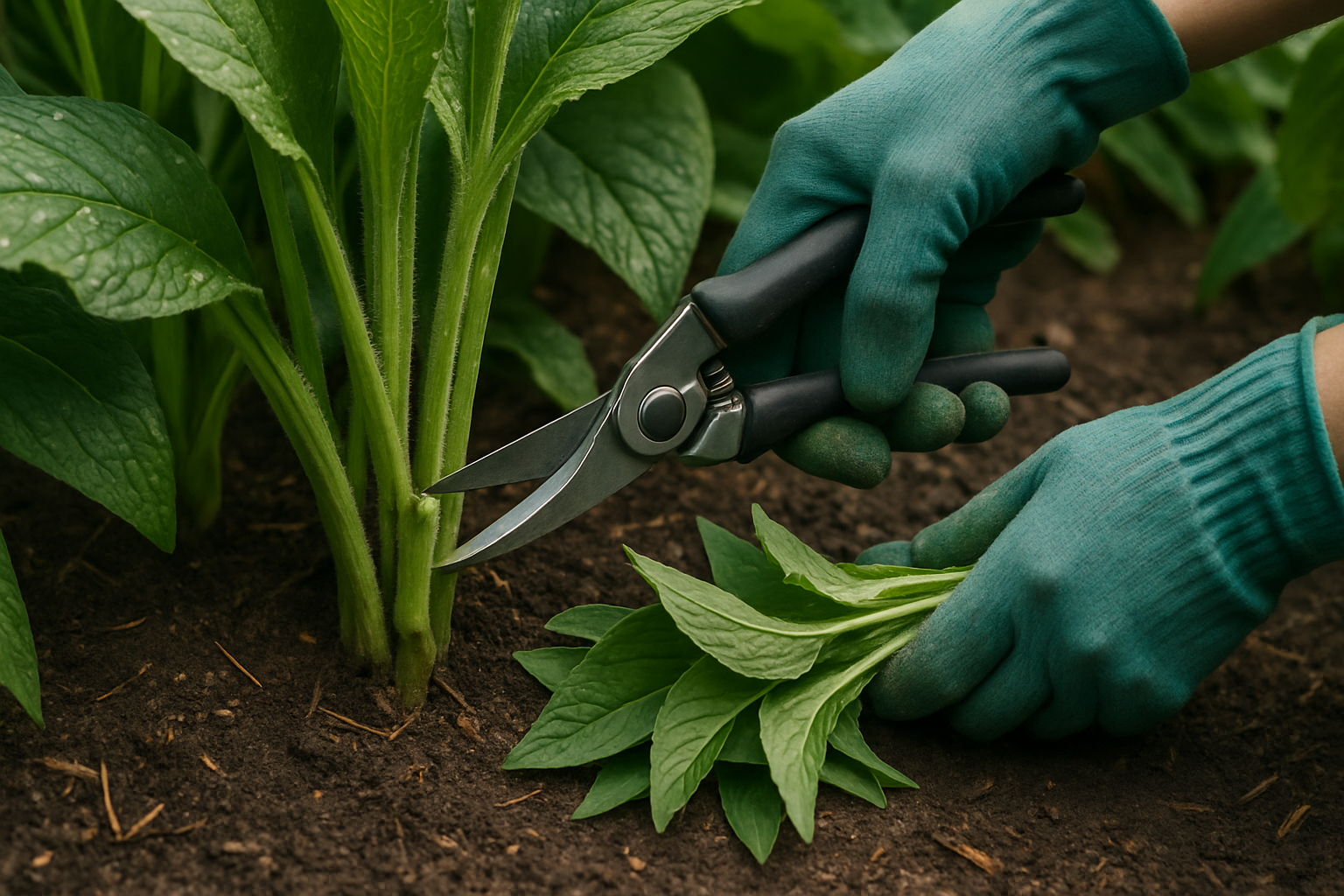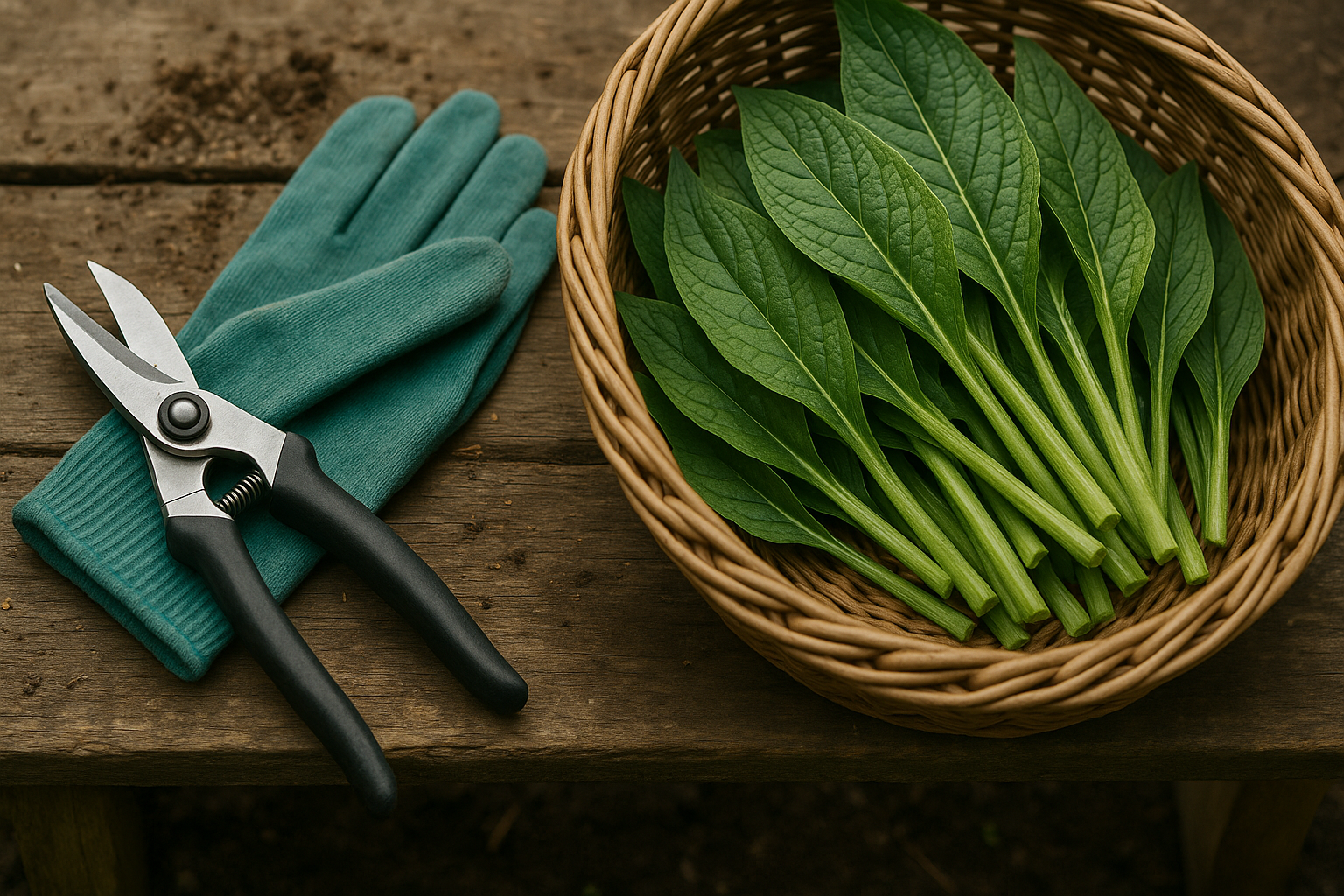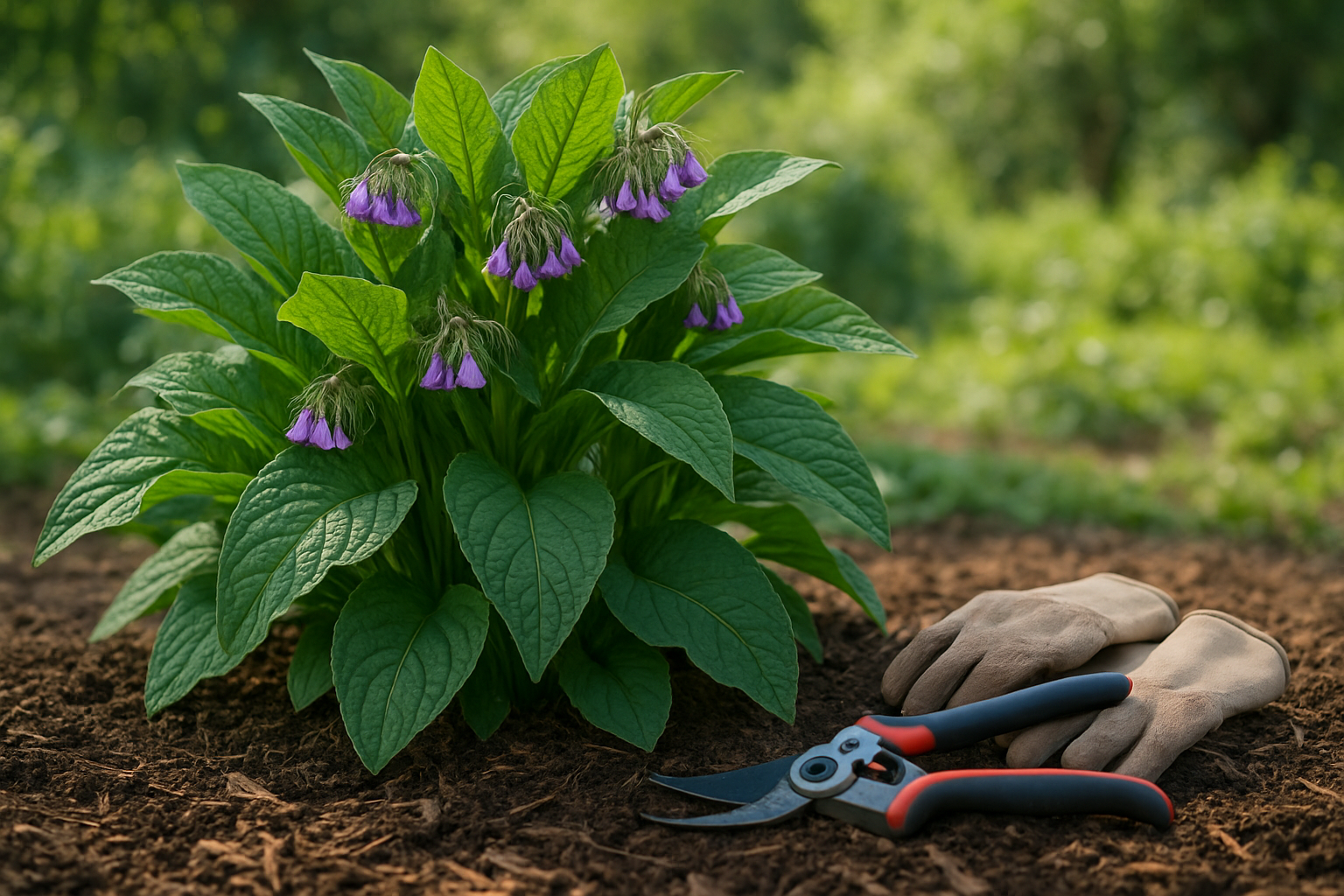Why Prune or Cut Back Comfrey

Pruning or cutting back comfrey is essential for gardeners who want to keep this vigorous plant under control. Comfrey is famous for its rapid, almost unstoppable growth, quickly forming dense clumps that can overtake garden beds if left unchecked. By trimming it back a few times a season, you can prevent comfrey from spreading too aggressively and crowding out other plants.
Regular cutting also encourages strong regrowth, producing lush, tender leaves rather than tough or ragged ones. These leaves not only look better but also break down more easily when used as compost or mulch. If you’re harvesting comfrey for medicinal salves or as fertilizer, healthier regrowth means higher-quality leaves packed with nutrients.
Pruning also removes older, damaged foliage, reducing the risk of pests and diseases that thrive in decaying plant matter. For best results, cut comfrey back to a few inches above the ground two or three times during the growing season. This keeps the plant healthy, productive, and manageable, while yielding a continual supply of valuable leaves for your garden or herbal projects.
By establishing a regular pruning routine, you harness the benefits of comfrey without letting it dominate your space.
Best Time to Prune Comfrey
The best times to prune comfrey are early spring, midsummer, and late summer, each offering unique benefits for both the plant and your garden.
In early spring, as soon as new shoots reach about 12 to 18 inches in height and the leaves appear lush and green, it’s a great moment for your first cut. This encourages bushier regrowth and prevents early flowering.
By midsummer, you’ll notice another flush of rapid growth. If comfrey’s flower stalks start to appear or older leaves look floppy or yellow, it’s time for a second round of pruning.
Late summer provides a final opportunity to cut back the plant before it prepares for dormancy. Wait until most leaves are mature but not yet wilting.
In cooler climates, stick to spring and midsummer cuts to avoid stressing the plant before frost sets in. Warmer regions can handle an additional late summer pruning, as comfrey bounces back more quickly.
Always use clean, sharp shears, and leave a few inches of growth above the ground to help the plant recover. By timing your pruning to these key moments, you’ll keep your comfrey healthy, prevent it from getting leggy or invasive, and enjoy a steady supply of nutrient-rich leaves for compost or mulch.
How to Prune or Cut Back Comfrey Properly

Pruning comfrey is straightforward with the right approach, ensuring healthy regrowth for both ornamental and practical uses like homemade fertilizer. Start by gathering your tools: a pair of clean, sharp pruning shears or garden scissors, gloves to protect your skin from the plant’s prickly hairs, and, if possible, long sleeves to avoid irritation.
For a full cutback—which is ideal after blooming or when you want a big harvest—trim all stems down to about 2 inches above the ground, making clean, angled cuts to encourage healthy shoots and prevent water from pooling on the stems. Be sure not to cut below this height, as this may damage the plant’s crown and roots, leading to poor regrowth or even plant loss.
If you’re only looking to collect leaves without stunting the plant, use the selective harvesting method: snip the largest, outer leaves individually at the base, allowing the inner leaves to keep growing and provide energy. Always avoid yanking leaves, as this can uproot sections or tear the plant.
Watch for signs of stress, like yellowing leaves or slow regrowth—these may indicate over-pruning, poor soil, or insufficient water. If dividing comfrey or digging near the roots, be gentle, as severed roots can lead to new comfrey plants popping up in unwanted spots.
Regular but moderate pruning helps comfrey thrive, giving you multiple lush harvests throughout the season while keeping the patch healthy and productive.
Aftercare and Encouraging Regrowth
After you’ve finished pruning your comfrey, focus on proper aftercare to support regrowth and keep your plant thriving. Start by giving the plant a deep watering, which helps soothe any stress from pruning and encourages the roots to draw up nutrients.
Applying a 2-3 inch layer of organic mulch, like straw or shredded leaves, helps conserve moisture, regulate soil temperature, and keep weeds at bay. To boost recovery, gently feed your comfrey with a balanced organic fertilizer or compost tea—this replenishes nutrients lost during pruning and fuels new foliage.
Consistent pruning actually benefits comfrey by stimulating its root system, making the entire plant stronger and more vigorous over time. Healthy comfrey responds quickly: within a week after pruning, you’ll notice tender new shoots pushing up. By two to three weeks, expect a lush flush of fresh leaves—proof your aftercare is working.
Watch for deep green, robust foliage and steadily increasing leaf size as key signs of a thriving plant. If the new growth looks pale or limp, reassess your watering or feeding practices. With thoughtful aftercare, your comfrey will reward you with dense, resilient growth season after season.
How to Use Harvested Comfrey Leaves
Harvested comfrey leaves are a versatile resource in any garden, offering several practical uses. Many gardeners rely on comfrey as a powerful compost activator—simply layer chopped leaves into your compost pile to speed up decomposition and boost nutrient content.
Another popular use is making comfrey “tea,” a potent liquid fertilizer. To make it, stuff leaves into a bucket, add water, cover, and let it steep for a few weeks. The resulting dark liquid can be diluted (about one part comfrey tea to ten parts water) and used to nourish vegetables and flowers.
As mulch, fresh or wilted comfrey leaves can be laid directly around plants to suppress weeds and slowly release nutrients. Just tuck them under your existing mulch or place them directly onto bare soil.
Traditional Medicinal Uses
Comfrey’s traditional medicinal uses include poultices for bruises or sore joints, but it’s important to process leaves carefully. Always wash thoroughly, use only recently harvested, unblemished leaves, and avoid applying comfrey on broken skin, as it can contain compounds harmful if absorbed.
Storage Tips
- Dry leaves flat on a rack in a cool, airy spot.
- Freeze chopped leaves in airtight bags for later use.
Always wear gloves when handling comfrey to avoid skin irritation, and consult a qualified health professional before using comfrey remedies.
Common Mistakes and Troubleshooting
One of the most common pruning mistakes is over-cutting—a well-intentioned gardener can remove too much foliage, which stresses the plant and slows its growth. To avoid this, always trim lightly, cutting only what’s necessary to shape the plant or remove dead wood.
Another frequent error is cutting branches too close to the ground or main stem, which can damage growth points and invite disease. Instead, make clean cuts just above a healthy bud or lateral branch.
Neglecting aftercare, such as failing to water or fertilize, can leave plants vulnerable. To prevent setbacks, clean your tools before and after pruning to stop the spread of disease, and always monitor plants for signs of stress like wilted leaves or slow recovery.
Remember, successful pruning means patience—take your time, observe how your plants respond, and never remove more than one-third of growth at once.
